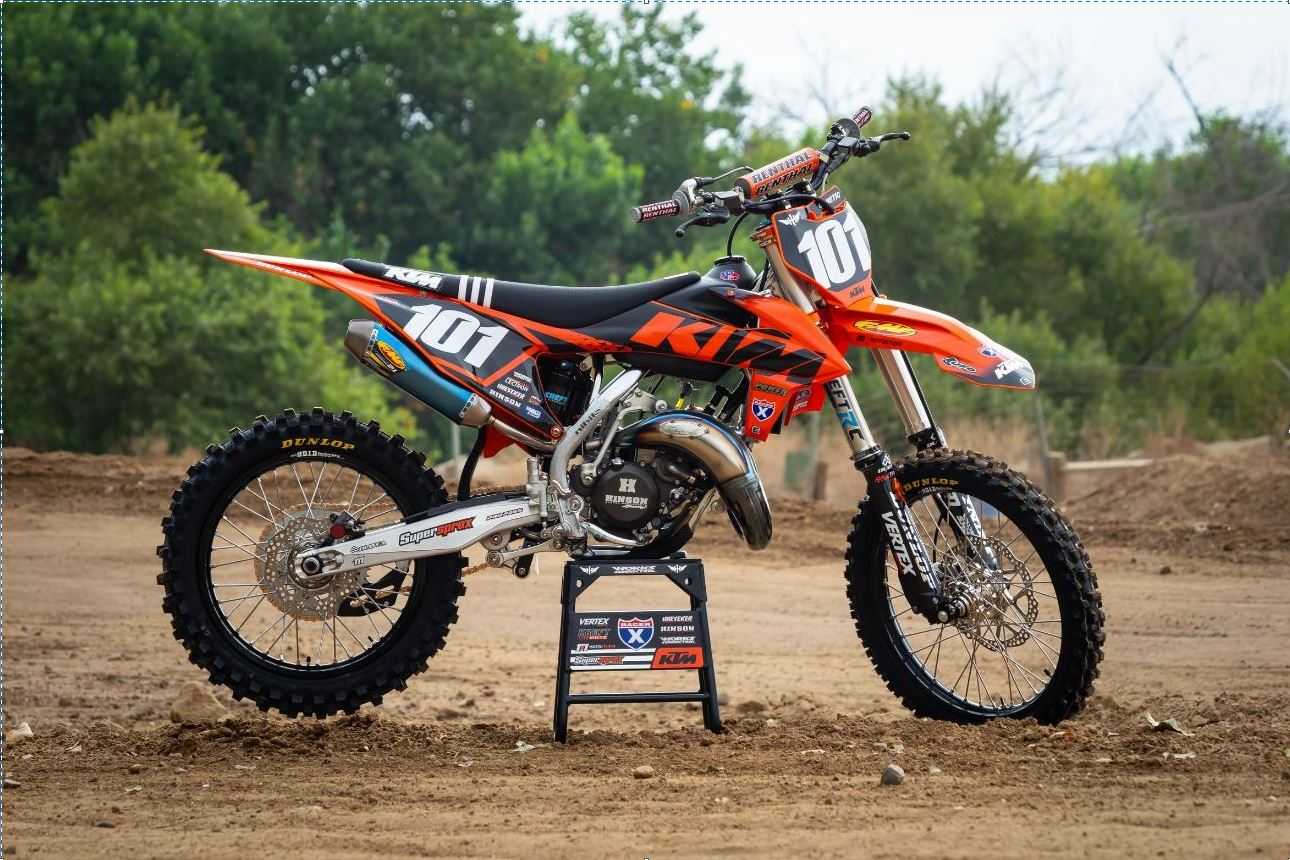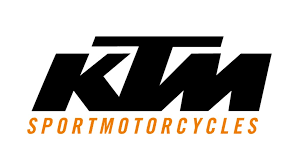KTM 150 SX 2022 User Manual
The KTM 150 SX is a high-performance motocross bike designed for competitive off-road racing. It is known for its powerful engine, lightweight construction, and advanced features. Here are some key features of the previous model:
Engine: The KTM 150 SX is equipped with a 150cc two-stroke engine that delivers impressive power and torque. KTM’s expertise in two-stroke technology ensures excellent performance and a thrilling riding experience on the motocross track.
Chassis: The bike features a lightweight and agile chassis that offers excellent handling and maneuverability. It is designed to provide optimal stability and control while tackling jumps, corners, and rough terrains.
Suspension: The KTM 150 SX is equipped with high-quality suspension components. It features fully adjustable WP XACT front forks and a WP XACT rear shock, allowing riders to fine-tune the suspension to their preferences and track conditions.
Brakes: The bike comes with high-performance braking components to ensure reliable stopping power. It typically features Brembo hydraulic brakes, providing excellent braking performance and control.
Technology: The KTM 150 SX incorporates advanced technologies to enhance performance and rider experience. It may include features such as an adjustable power valve, selectable engine mapping, launch control, and traction control, among others.
Design: The 150 SX boasts a sleek and aggressive design, with styling cues that reflect its racing pedigree. It typically features KTM’s signature orange color scheme and graphics, giving it a distinct appearance.
It’s important to note that the specifications and features of the KTM 150 SX for the year 2022 may differ from the previous model. For the most accurate and up-to-date information, I recommend visiting the official KTM website or contacting a KTM dealership to inquire about the specific details of the 2022 KTM 150 SX.
Advice on preparing for first use
Danger
The danger of accidents A rider who is not fit to ride poses a danger to him or herself and others.
- Do not operate the vehicle if you are not fit to ride due to alcohol, drugs or medication.
- Do not operate the vehicle if you are physically or mentally impaired.
Warning
Risk of injury Missing or poor protective clothing presents an increased safety risk.
- Wear appropriate protective clothing such as helmets, boots, gloves as well as trousers, and a jacket with protectors on all rides.
- Always wear protective clothing that is in good condition and meets the legal regulations.
Warning
The danger of crashing Different tire tread patterns on the front and rear wheels impair the handling characteristic.
Different tire tread patterns can make the vehicle significantly more difficult to control.
- Make sure that only tires with a similar tire tread pattern are fitted to the front and rear wheel.
Warning
- The danger of accidents An unadapted riding style impairs the handling characteristic.
- Adapt your riding speed to the road conditions and your riding ability.
Warning
The danger of accidents The vehicle is not designed to carry passengers.
- Do not ride with a passenger.
Warning
The danger of accidents The brake system fails in the event of overheating. If the foot brake lever is not released, the brake linings drag continuously.
- Take your foot off the foot brake lever when you are not braking.
Warning
The danger of accidents Total weight and axle loads influence the handling characteristic.
- Do not exceed the maximum permissible overall weight or the axle loads.
Warning
Risk of misappropriation People who act without authorization endangers themselves and others.
- Do not leave the vehicle unattended if the engine is running.
- Protect the vehicle against access by unauthorized persons.
Degrees of risk and symbols
Danger
Identifies a danger that will immediately and invariably lead to fatal or serious permanent injury if the appropriate measures are not taken.
Warning
Identifies a danger that is likely to lead to fatal or serious injury if the appropriate measures are not taken.
Caution
Identifies a danger that may lead to minor injuries if the appropriate measures are not taken.
Note
Identifies a danger that will lead to considerable machine and material damage if the appropriate measures are not taken.
Note
Indicates a danger that will lead to environmental damage if the appropriate measures are not taken.
Tampering warning
Tampering with the noise control system is prohibited. Federal law prohibits the following acts or the causing thereof:
- The removal or rendering inoperative by any person other than for purposes of servicing, repair, or replacement, of any device or element of design incorporated into any new vehicle for the purpose of noise control prior to its sale or delivery to the ultimate purchaser or while it is in use, or
- the use of the vehicle after such device or element of the design has been removed or rendered inoperative by any person.
Among those acts presumed to constitute tampering are the acts listed below:
- Removal or puncturing of the main silencers, baffles, header pipes or any other components which conduct exhaust gases.
- Removal or puncturing of parts of the intake system.
- Lack of proper maintenance.
- Replacing moving parts of the vehicle, or parts of the exhaust system or intake system, with parts other than those specified by the manufacturer.
Safe operation
Danger
The danger of accidents A rider who is not fit to ride poses a danger to him or herself and others.
- Do not operate the vehicle if you are not fit to ride due to alcohol, drugs, or medication.
- Do not operate the vehicle if you are physically or mentally impaired.
Danger
The danger of poisoning Exhaust gases are toxic and inhaling them may result in unconsciousness and death.
- Always make sure there is sufficient ventilation when running the engine. Use effective exhaust extraction when starting or running the engine in an enclosed space.
Warning
The danger of burns Some vehicle components become very hot when the vehicle is operated.
- Do not touch any parts such as the exhaust system, radiator, engine, shock absorber, or brake system before the vehicle parts have cooled down. Let the vehicle parts cool down before you perform any work on the vehicle. Only operate the vehicle when it is in perfect technical condition, in accordance with its intended use, and in a safe and environmentally compatible manner. The vehicle should only be used by trained persons. An appropriate driver’s license is needed to drive the vehicle on public roads. Have malfunctions that impair safety are promptly eliminated by an authorized KTM workshop. Adhere to the information and warning labels on the vehicle.
Protective clothing
Warning
Risk of injury Missing or poor protective clothing presents an increased safety risk.
- Wear appropriate protective clothing such as helmet, boots, gloves as well as trousers and a jacket
with protectors on all rides. - Always wear protective clothing that is in good condition and meets the legal regulations.
In the interest of your own safety, KTM recommends that you only operate the vehicle while wearing protective
clothing.
Work rules
Unless specified otherwise, the ignition must be turned off during all work (model with ignition switch) or the engine must be at a standstill (models without ignition switch). Special tools are necessary for certain tasks. The tools are not a component of the vehicle but can be ordered using the number in parentheses.
Example: bearing puller (15112017000) During assembly, use new parts to replace parts that cannot be reused (e.g. self-locking screws and nuts, seals, sealing rings, O-rings, pins, and lock washers). In the case of certain screws, a screw adhesive (e.g. Loctite®) is required. Observe the manufacturer’s instructions. If a thread locker (e.g., Precote®) has already been applied to a new part, do not apply any additional thread locker. After disassembly, clean the parts that are to be reused and check them for damage and wear. Change damaged or worn parts. After completing a repair or service work, check the operating safety of the vehicle.
Environment
If you use your motorcycle responsibly, you can ensure that problems and conflicts do not occur. To protect the future of the motorcycle sport, make sure that you use your motorcycle legally, display environmental consciousness, and respect the rights of others. When disposing of used oil, other operating and auxiliary fluids, and used components, comply with the laws and regulations of the respective country. Because motorcycles are not subject to the EU regulations governing the disposal of used vehicles, there are no legal regulations that pertain to the disposal of an end-of-life motorcycle. Your authorized KTM dealer will be glad to advise you.
Info
When using your motorcycle, remember that others may feel disturbed by excessive noise.
- Make sure that the pre-sales inspection work has been carried out by an authorized KTM workshop. You will receive a delivery certificate when the vehicle is handed over.
- Before riding for the first time, read the entire Owner’s Manual carefully.
- Get to know the controls.
- Adjust the basic position of the clutch lever. ( p. 87)http://www.ktm.com
Figures
The figures contained in the manual may depict special equipment. In the interest of clarity, some components may be shown disassembled or may not be shown at all. It is not always necessary to disassemble the component to perform the activity in question. Please follow the instructions in the text.
Reference Link
Download Link: https://www.ktm.com/en-us/service/manuals.html


